
Omdia: Cable companies are pushing PON
- Categories:Industry News
- Time of issue:2023-11-29
(Summary description)The Omdia survey found that 35% of Cable operators have already deployed PON in their networks, and nearly half expect to do so within 12 months. At the same time, EPB, a municipal operator in the United States, is already experimenting with quantum computing 50G SFP-DD PON OLT. Many cable operators are advancing Hybrid Fiber/Coax (HFC) upgrades, but a significant number of them are also deploying PON technology for fiber-to-the-home (FTTP) build-out in rural areas and other greenfield environments. Other companies, such as Altice USA and Virgin Media O2, are actively covering the PON 50G SFP-DD PON OLT on their legacy HFC networks. A recent Omdia survey shed light on PON deployments by cable operators. Omdia, a sister company of Light Reading, found that about 35 percent of cable operators surveyed have already deployed PON in their networks, with another 47 percent expecting to do so in the next year. Only 8% of operators said they had no current plans to deploy PON. This means that by next spring, about 80 percent of cable operators will have deployed the PON 50G SFP-DD PON OLT in some form or fashion, Alan Breznick, a contributing analyst at Heavy Reading, said during Light Reading's "LiveLearning" webinar co-hosted with SCTE. Major industry organizations are also actively promoting the PON 50G SFP-DD PON OLT technology. A prime example is CableLabs, which has recently formed two fiber-oriented working groups focused on optical operation and maintenance, and has designated a DOCSIS framework for providing ITU-based PON technologies, including XGS-PON with 10g support. While current PON 50G SFP-DD PON OLT deployments are focused on 10Gig technology, there has been some action focused on next-generation 25Gig technology. Google Fiber is starting to move in this direction, and EPB, a municipal carrier in Chattanooga, Tennessee, has launched a symmetrical 25Gbit/s service covering about 180,000 homes and businesses. What's next for PON? Douglas Blue, head of business development for Nokia's fixed networks unit in North America, believes that 10Gig PON technology will be mainstream in regions where competition is limited, but 25Gig PON technology is taking off in more competitive regions. He does not consider the 25G PON to be the "next generation," as shipments of products such as the related Optical Line Terminal (OLT) have been going on for about four years. Richard Rommes, vice president of Access Network solutions and strategy at Harmonic, agrees that the 10G PON has some advantages, but sees the 100G PON as the next big upgrade to the 50G SFP-DD PON OLT on the horizon. But speed and capacity are only two parts of the equation. "The real issue may not be speed, but how operators manage these new networks and make the necessary upgrades to their back-office systems," said Richard Loveland, director of product line management for FTTP products PON at Vecima networks. He said cable operators will have to decide to focus on DocsIS-style technology or consider moving to a new system and platform, the 50G SFP-DD PON OLT. Unified access - and the ability to disrupt multiple networks to serve multiple verticals - also has something to do with this thinking, Blue said. He believes that the capacity supported by 25G PON 50G SFP-DD PON OLT opens the door for a unified access platform, while 10G technology will fall short. Katie Espeseth, vice president of new products at EPB, agrees, noting that the 25G PON 50G SFP-DD PON OLT reduces costs while also providing the bandwidth needed by hospitals, universities and other local institutions. "It (25G PON) has opened up a whole new world for us," she said. But some forum members disagree on when the 25G PON 50G SFP-DD PON OLT will be deployed at scale. Vecima's Loveland said that commercial chips cannot support widespread deployment, and it is also uncertain whether the next big trend will be 25G or 50G Pons. Blue believes the 25Gig OLT is already deployed at scale. Nokia has deployed about 1.1 million OLT ports, he said. At a scale of 1:32, this equates to 32 million terminals potentially having 25G capacity. But he acknowledged that it could be another six months to a year before the price of 25G optical network terminals (ONT) falls, further boosting the market for 50G SFP-DD PON OLTs. Today's PON 50G SFP-DD PON OLT, tomorrow's quantum computing EPB has been at the forefront of PON 50G SFP-DD PON OLT technology, but the company has also begun to focus on quantum computing, as IBM explains, Quantum Computing uses the laws of quantum mechanics to deal with problems considered too complex for classical Computing Architecture. Espeseth said that if classical computing is described as a "crack in the wall," then quantum computing is like opening up the Grand Canyon. She explained: "We do think quantum technology is going to drive this country forward in 2035, 2040... We think we need to move in that direction now." EPB launched its quantum network about a
Omdia: Cable companies are pushing PON
(Summary description)The Omdia survey found that 35% of Cable operators have already deployed PON in their networks, and nearly half expect to do so within 12 months. At the same time, EPB, a municipal operator in the United States, is already experimenting with quantum computing 50G SFP-DD PON OLT.
Many cable operators are advancing Hybrid Fiber/Coax (HFC) upgrades, but a significant number of them are also deploying PON technology for fiber-to-the-home (FTTP) build-out in rural areas and other greenfield environments. Other companies, such as Altice USA and Virgin Media O2, are actively covering the PON 50G SFP-DD PON OLT on their legacy HFC networks.
A recent Omdia survey shed light on PON deployments by cable operators. Omdia, a sister company of Light Reading, found that about 35 percent of cable operators surveyed have already deployed PON in their networks, with another 47 percent expecting to do so in the next year. Only 8% of operators said they had no current plans to deploy PON. This means that by next spring, about 80 percent of cable operators will have deployed the PON 50G SFP-DD PON OLT in some form or fashion, Alan Breznick, a contributing analyst at Heavy Reading, said during Light Reading's "LiveLearning" webinar co-hosted with SCTE.
Major industry organizations are also actively promoting the PON 50G SFP-DD PON OLT technology. A prime example is CableLabs, which has recently formed two fiber-oriented working groups focused on optical operation and maintenance, and has designated a DOCSIS framework for providing ITU-based PON technologies, including XGS-PON with 10g support.
While current PON 50G SFP-DD PON OLT deployments are focused on 10Gig technology, there has been some action focused on next-generation 25Gig technology. Google Fiber is starting to move in this direction, and EPB, a municipal carrier in Chattanooga, Tennessee, has launched a symmetrical 25Gbit/s service covering about 180,000 homes and businesses.
What's next for PON?
Douglas Blue, head of business development for Nokia's fixed networks unit in North America, believes that 10Gig PON technology will be mainstream in regions where competition is limited, but 25Gig PON technology is taking off in more competitive regions. He does not consider the 25G PON to be the "next generation," as shipments of products such as the related Optical Line Terminal (OLT) have been going on for about four years.
Richard Rommes, vice president of Access Network solutions and strategy at Harmonic, agrees that the 10G PON has some advantages, but sees the 100G PON as the next big upgrade to the 50G SFP-DD PON OLT on the horizon.
But speed and capacity are only two parts of the equation.
"The real issue may not be speed, but how operators manage these new networks and make the necessary upgrades to their back-office systems," said Richard Loveland, director of product line management for FTTP products PON at Vecima networks. He said cable operators will have to decide to focus on DocsIS-style technology or consider moving to a new system and platform, the 50G SFP-DD PON OLT.
Unified access - and the ability to disrupt multiple networks to serve multiple verticals - also has something to do with this thinking, Blue said. He believes that the capacity supported by 25G PON 50G SFP-DD PON OLT opens the door for a unified access platform, while 10G technology will fall short.
Katie Espeseth, vice president of new products at EPB, agrees, noting that the 25G PON 50G SFP-DD PON OLT reduces costs while also providing the bandwidth needed by hospitals, universities and other local institutions. "It (25G PON) has opened up a whole new world for us," she said.
But some forum members disagree on when the 25G PON 50G SFP-DD PON OLT will be deployed at scale. Vecima's Loveland said that commercial chips cannot support widespread deployment, and it is also uncertain whether the next big trend will be 25G or 50G Pons.
Blue believes the 25Gig OLT is already deployed at scale. Nokia has deployed about 1.1 million OLT ports, he said. At a scale of 1:32, this equates to 32 million terminals potentially having 25G capacity. But he acknowledged that it could be another six months to a year before the price of 25G optical network terminals (ONT) falls, further boosting the market for 50G SFP-DD PON OLTs.
Today's PON 50G SFP-DD PON OLT, tomorrow's quantum computing
EPB has been at the forefront of PON 50G SFP-DD PON OLT technology, but the company has also begun to focus on quantum computing, as IBM explains, Quantum Computing uses the laws of quantum mechanics to deal with problems considered too complex for classical Computing Architecture.
Espeseth said that if classical computing is described as a "crack in the wall," then quantum computing is like opening up the Grand Canyon. She explained: "We do think quantum technology is going to drive this country forward in 2035, 2040... We think we need to move in that direction now."
EPB launched its quantum network about a
- Categories:Industry News
- Time of issue:2023-11-29
- Views:
The Omdia survey found that 35% of Cable operators have already deployed PON in their networks, and nearly half expect to do so within 12 months. At the same time, EPB, a municipal operator in the United States, is already experimenting with quantum computing 50G SFP-DD PON OLT.
Many cable operators are advancing Hybrid Fiber/Coax (HFC) upgrades, but a significant number of them are also deploying PON technology for fiber-to-the-home (FTTP) build-out in rural areas and other greenfield environments. Other companies, such as Altice USA and Virgin Media O2, are actively covering the PON 50G SFP-DD PON OLT on their legacy HFC networks.
A recent Omdia survey shed light on PON deployments by cable operators. Omdia, a sister company of Light Reading, found that about 35 percent of cable operators surveyed have already deployed PON in their networks, with another 47 percent expecting to do so in the next year. Only 8% of operators said they had no current plans to deploy PON. This means that by next spring, about 80 percent of cable operators will have deployed the PON 50G SFP-DD PON OLT in some form or fashion, Alan Breznick, a contributing analyst at Heavy Reading, said during Light Reading's "LiveLearning" webinar co-hosted with SCTE.
Major industry organizations are also actively promoting the PON 50G SFP-DD PON OLT technology. A prime example is CableLabs, which has recently formed two fiber-oriented working groups focused on optical operation and maintenance, and has designated a DOCSIS framework for providing ITU-based PON technologies, including XGS-PON with 10g support.
While current PON 50G SFP-DD PON OLT deployments are focused on 10Gig technology, there has been some action focused on next-generation 25Gig technology. Google Fiber is starting to move in this direction, and EPB, a municipal carrier in Chattanooga, Tennessee, has launched a symmetrical 25Gbit/s service covering about 180,000 homes and businesses.
What's next for PON?
Douglas Blue, head of business development for Nokia's fixed networks unit in North America, believes that 10Gig PON technology will be mainstream in regions where competition is limited, but 25Gig PON technology is taking off in more competitive regions. He does not consider the 25G PON to be the "next generation," as shipments of products such as the related Optical Line Terminal (OLT) have been going on for about four years.
Richard Rommes, vice president of Access Network solutions and strategy at Harmonic, agrees that the 10G PON has some advantages, but sees the 100G PON as the next big upgrade to the 50G SFP-DD PON OLT on the horizon.
But speed and capacity are only two parts of the equation.
"The real issue may not be speed, but how operators manage these new networks and make the necessary upgrades to their back-office systems," said Richard Loveland, director of product line management for FTTP products PON at Vecima networks. He said cable operators will have to decide to focus on DocsIS-style technology or consider moving to a new system and platform, the 50G SFP-DD PON OLT.
Unified access - and the ability to disrupt multiple networks to serve multiple verticals - also has something to do with this thinking, Blue said. He believes that the capacity supported by 25G PON 50G SFP-DD PON OLT opens the door for a unified access platform, while 10G technology will fall short.
Katie Espeseth, vice president of new products at EPB, agrees, noting that the 25G PON 50G SFP-DD PON OLT reduces costs while also providing the bandwidth needed by hospitals, universities and other local institutions. "It (25G PON) has opened up a whole new world for us," she said.
But some forum members disagree on when the 25G PON 50G SFP-DD PON OLT will be deployed at scale. Vecima's Loveland said that commercial chips cannot support widespread deployment, and it is also uncertain whether the next big trend will be 25G or 50G Pons.
Blue believes the 25Gig OLT is already deployed at scale. Nokia has deployed about 1.1 million OLT ports, he said. At a scale of 1:32, this equates to 32 million terminals potentially having 25G capacity. But he acknowledged that it could be another six months to a year before the price of 25G optical network terminals (ONT) falls, further boosting the market for 50G SFP-DD PON OLTs.
Today's PON 50G SFP-DD PON OLT, tomorrow's quantum computing
EPB has been at the forefront of PON 50G SFP-DD PON OLT technology, but the company has also begun to focus on quantum computing, as IBM explains, Quantum Computing uses the laws of quantum mechanics to deal with problems considered too complex for classical Computing Architecture.
Espeseth said that if classical computing is described as a "crack in the wall," then quantum computing is like opening up the Grand Canyon. She explained: "We do think quantum technology is going to drive this country forward in 2035, 2040... We think we need to move in that direction now."
EPB launched its quantum network about a year ago. Starting with a 5km loop capable of expanding to 10 nodes, plans call for municipal operators to increase the network to 20km and then "at least" 90km, Espeseth said.
Quantum computing has a potential role in the EPB's power grid, which will evolve to reliably and securely manage millions of connected devices, she said.
Espeseth stressed that PON technology "has a long life" and EPB will not abandon the technology. "But all of that relies on fiber optic base technology," she said. Espeseth said EPG will be able to layer quantum computing technology on top of its existing PON network architecture.

Sichuan Guangheng Tongxin Technology Co., Ltd. was established in 2001, focusing on the design and development, manufacturing, sales, technical support, Optical Transceiver OEM and custom services. After 20 years of technology accumulation and development, IT has formed a core technology design platform such as optical path, mechanical structure, high frequency simulation, thermal simulation, circuit, FPC soft board, IT software automation, etc. With the ability TO vertically integrate the industrial chain from optical chip BAR testing, cutting, sorting, TO-CAN packaging, BOX device packaging, COB packaging, optical module packaging commissioning, fiber optic connectors and precision optical machined components. The company has business in China, North America, Europe, and Southeast Asia, and its customers are mainly domestic and foreign equipment manufacturers and subsystem manufacturers, and the company is also the holding subsidiary of the world's leading optical fiber, cable and integrated solution provider Changfei Optical Fiber and Cable Co., LTD. 50G SFP-DD PON OLT.
Scan the QR code to read on your phone
Related
-
New products | Sunstar announced: 50G PON three-mode combo OLT miniaturized optical device for SFP and QSFP packages
With the popularization of gigabit broadband, 10G PON has entered the stage of large-scale deployment. At the same time, the industry is also laying out 50G PON to prepare for the 10-gigabit era. Compared with 10G PON, the 50G PON standard provides five times more access bandwidth and better service support capabilities (large bandwidth, low latency, and high reliability). At the same time, for operators, the biggest problem facing the commercial use of 50G PON is the problem of multi-generation coexistence. ITU-T standards provide different options for the differentiated deployment of global operators. GPON region, G.9804.1 Amd2 and G.9805 offer 2 classes /5 options; EPON area, provides 2 types /4 options. From this point of view, multi-generation coexistence is an inevitable choice in the continuous evolution of the next generation PON. Sunstar Communication Technology Co.,Ltd.released 50G PON three-mode Combo OLT miniaturized optical device, which is MPM (built-in combined wave) 3-generation wave division mode coexistence, that is, G/XG(S)/50G three-mode MPM. The advantage of this solution is that the traditional gateway devices can be reused without changing or upgrading the user side, and the upgrade process can be optimized, equipment occupation and equipment room space can be saved, and energy consumption can be reduced. This three-mode Combo OLT miniaturized optical device uses a novel optical path design and a miniaturized TO-CAN package solution, and uses the technology accumulation and quality control of Sunstar Company in the field of coaxial packaging for many years, combining precision manufacturing, multi-wavelength spectrographic design and various types of TO-CAN package technology perfectly together. The 50G PON three-mode Combo OLT compact optical device of Sunstar Company is characterized by small size, high coupling efficiency, high structural reliability and strong manufacturability in mass production. The most critical is that its optimized optical path design and special packaging process ensure the upstream three-wavelength splitting, especially the isolation index of 50G PON upstream wavelength and GPON upstream wavelength, that is, the isolation degree of 1286±2nm and 1310±20nm edge wavelength; And take into account the high coupling efficiency of the downgoing three-way emitting laser to ensure the best output optical power index. This optical device is fully suitable for SFP and QSFP module packages, helping the access network to smoothly evolve to 50G PON. The 49th Optical Networking and Communications Symposium and Expo (OFC 2024) will be held from March 26 to 28, 2024 at the San Diego Convention Center, California, USA. The company will bring 10G PON OLT, 25G PON OLT, 50G PON OLT three-mode, 400G ER4 TOSA & ROSA, 800G DR8 optical module and a full range of AOC optical module solutions to the exhibition, welcome to visit the #3841 booth. About Sunstar Founded in 2001, Sunstar Communication Technology Co.,Ltd. focuses on the design, development, manufacturing, sales and technical support services of Optical Transceiver (OSA). After 20 years of technology accumulation and development, the formation of optical path, mechanical structure, high frequency simulation, thermal simulation, circuit, FPC soft board, IT software automation and other core technology design platform, and with precision machining, passive components, SMT, TO-CAN, OSA optical devices, COB, BOX, optical module the whole industry chain production and manufacturing capabilities. The company operates in China, North America, Europe, and Southeast Asia, and is also a subsidiary of the world's leading provider of optical fiber, cable and integrated solutions,YOFC Optical Fiber and Cable Co., LTD. - OFC2024 | Sunstar sincerely invites you to visit #3841 for negotiation and guidance 03-22
- Sunstar Combo 50G & XGS & GPON OLT QSFP-DD light module won the 2023 ICC "Excellent Technology Award" 01-10
- Tel:86-(0)28-87988088
- Fax:86-(0)28-87988568
- Address:4F.,Blog.D1,Mould lndustrial Park West High-tech Zone,Chengdu,Sichuan,P.R.C
Sunstar Communication Technology Co.,Ltd
Copyright © 2020 Sunstar Communication Technology Co.,Ltd All Rights Reserved 蜀ICP备19023203号-1




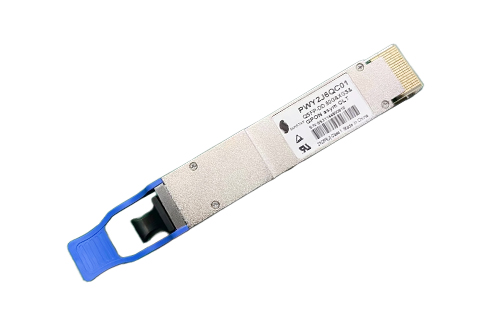
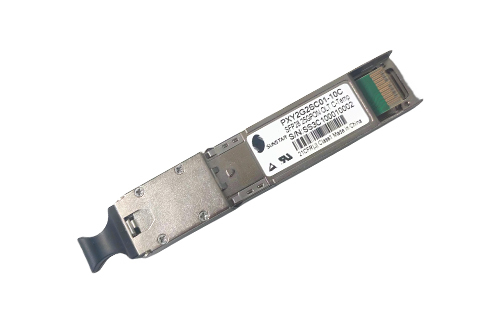


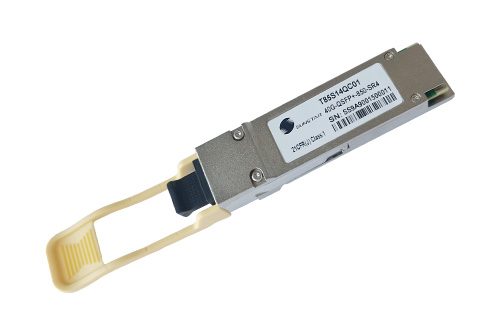


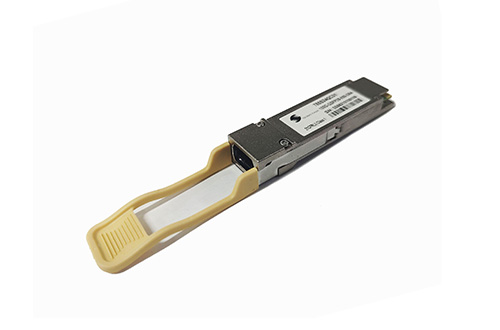
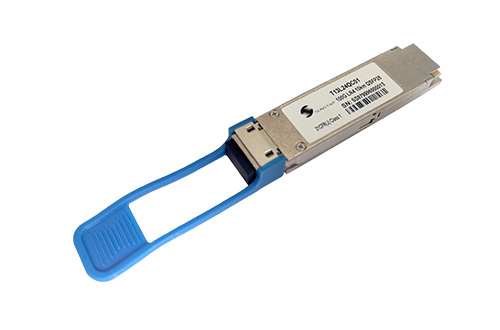
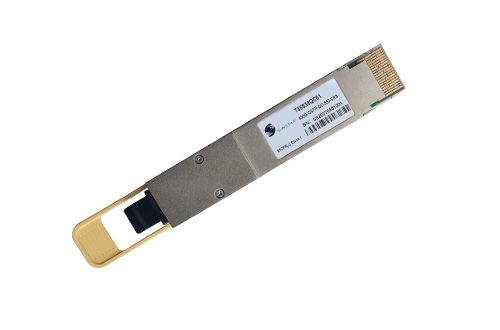
 Scan code
Scan code


